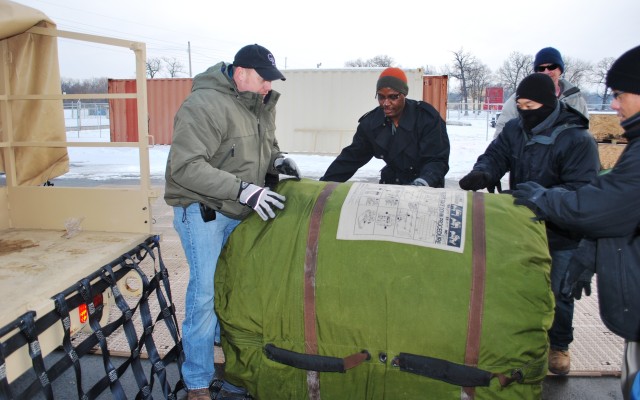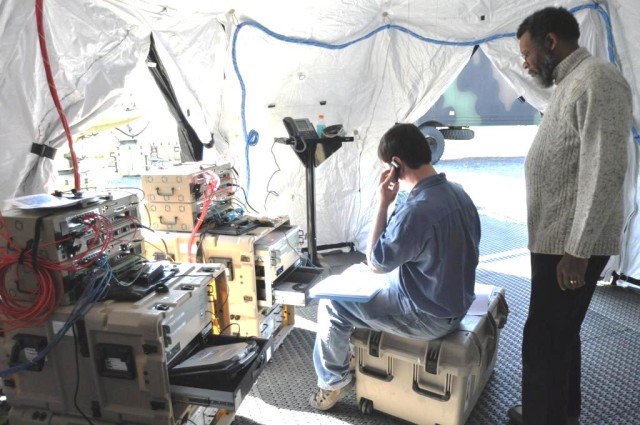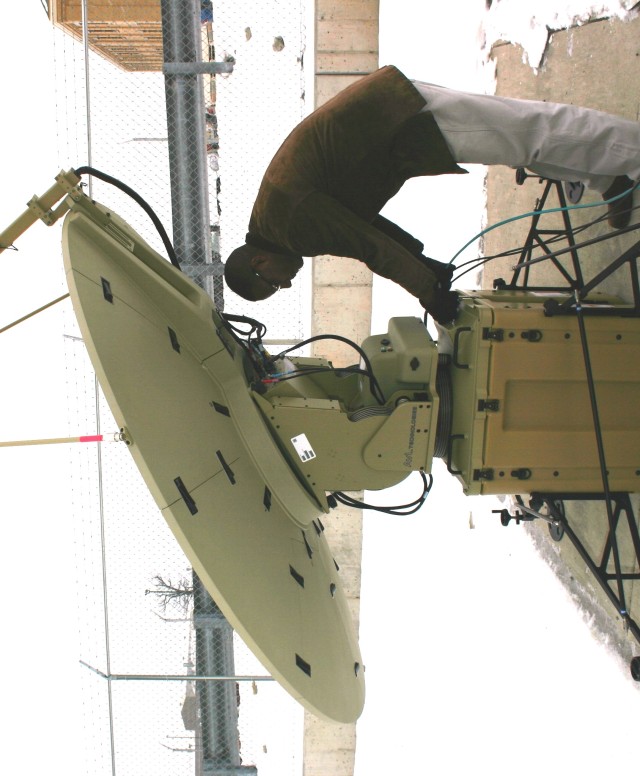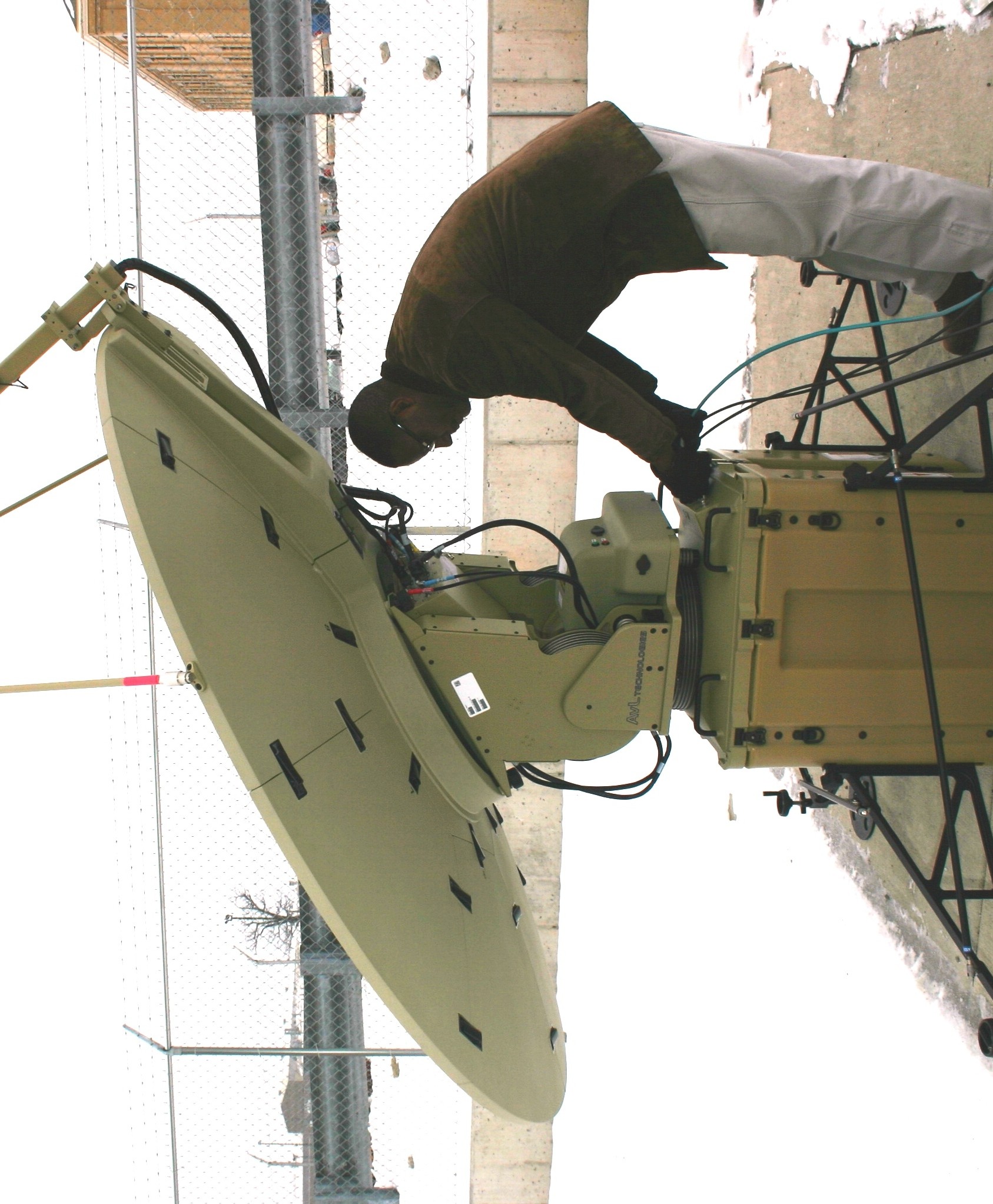ROCK ISLAND, Ill. - The U.S. Army Sustainment Command has obtained a mobile satellite system which will enable its Army Field Support Brigades to establish a common operating picture and provide capability for organic communications in forward command post situations.
The Secure Internet Protocol/Non-secure Internet Protocol Access Point (SNAP) terminal is a rapidly deployable satellite communication system field-proven for several years but only recently made available to ASC. It provides optimal readiness in any environment or situation, making it a flexible asset on the battlefield.
"This system will provide the Army Field Support Brigade with the connectivity needed to deploy a fully functional tactical operations center," said Terry Johnston, SATCOM manager at ASC G6.
The SNAP enables reach-back communications by providing the Logistic Warrior with both secure and non-secure e-mail, video-conferencing and voice capabilities through satellite communication networks.
"The SNAP is mobile, small and effective," said Capt. James Mick, ASC G-6 project officer.
Based on lessons learned from previous ASC combat operations and humanitarian missions in Iraq, Afghanistan, Haiti, and Pakistan, there appeared a noted lack of reliable and secure communications in rapid deployment situations.
As a test case for the system, the 405th AFSB emulated the setup of a forward command post and examined SNAP's potential during participation in Austere Challenge 10, an exercise conducted in Europe.
ASC is continuously assessing the communications and service requirements of its brigades and their subordinate units to ensure they achieve success, said Mick.
Moving from the acquisition to the training and deployment phase, ASC recently hosted key operators from its AFSBs for training on the SNAP along with various other related systems.
The trainees are expected to comprise a cadre who will be able to take the information they learned at Rock Island back to their home station to train their brigade peers.
Another major addition to ASC's mobile capability is the Rapid-deployable Tactical Operations Center, or RTOC. This system will enable ASC logisticians to combine multiple data feeds along with VTC onto one or multiple display screens. This will allow efficient management of information in real time, mimicking the capabilities of the ASC Command Operations and Information Center (COIC) on a smaller scale.
The RTOC can be used in conjunction with another element of the mobility package, the Deployable Rapid Assembly Shelter (DRASH) - a unique modular shelter that can either stand alone or be attached to other shelters and vehicles in minutes. These will allow each brigade to be more self-supporting. Each shelter has fully integrated electrical and lighting systems, as well as heating and cooling capabilities for extreme conditions. A single DRASH can accommodate up to 12 personnel when used as a Tactical Operations Center.






Social Sharing